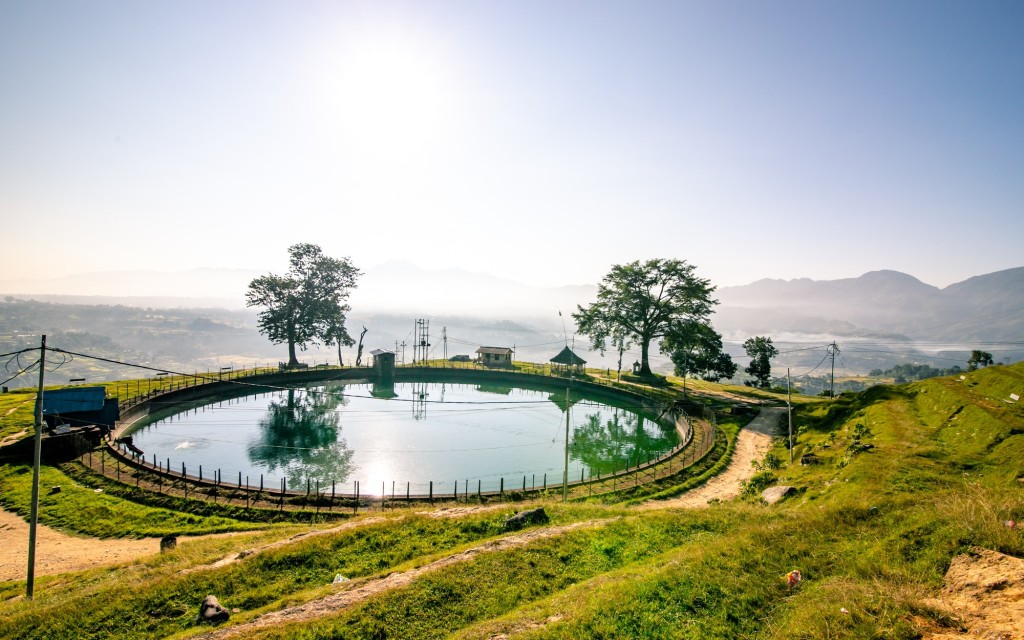
Hydropower, also known as hydroelectric power, is a renewable energy source that harnesses the power of flowing or falling water to generate electricity. It has been used for centuries and continues to be an important source of clean and sustainable energy worldwide. There are various types of hydropower systems, each with its own unique features and advantages.
The first type of hydropower system is the impoundment system. This system involves the construction of a dam on a river or stream to create a reservoir, which stores large amounts of water. When electricity is needed, the stored water is released from the reservoir and flows through turbines, which spin generators to produce electricity. The impoundment system is widely used due to its ability to store large amounts of water for later use, providing a reliable source of energy even during periods when there is no rainfall or low flow in rivers.
One example of an impoundment system is the Hoover Dam located on the Colorado River in Nevada and Arizona. Completed in 1936, it stands as an engineering marvel and has been generating electricity for over eight decades. The Hoover Dam’s reservoir, Lake Mead, can store up to 9 trillion gallons (34 trillion liters) of water and provides power to millions of people across multiple states.
Another type of hydropower system is called run-of-river systems. Unlike impoundment systems that rely on storing large amounts of water in reservoirs, run-of-river systems generate electricity by utilizing only the natural flow rate and elevation drop in rivers or streams without any significant storage capacity. These systems divert part or all of a river’s flow through turbines that generate electricity directly.
Run-of-river systems have several advantages over impoundment systems. They have lower environmental impacts since they do not require large dams or reservoirs, and they can be built on smaller rivers or streams. Additionally, run-of-river systems have a faster response time to changes in electricity demand since they do not rely on stored water. However, their power generation is dependent on the natural flow rate of the river, which can vary seasonally or due to climate change.
A notable example of a run-of-river system is the Three Gorges Dam in China. Completed in 2012, it is the largest hydropower project in the world and spans over 1.4 miles (2.3 kilometers) across the Yangtze River. The dam generates an enormous amount of electricity while minimizing its environmental impact by utilizing only a portion of the river’s flow.
Lastly, there are pumped storage systems that combine elements of both impoundment and run-of-river systems. These systems use excess electricity during periods of low demand to pump water from a lower reservoir to an upper reservoir. When there is high demand for electricity, water from the upper reservoir is released back down through turbines to generate electricity.
Pumped storage systems provide several benefits to the electrical grid. They act as energy storage devices that can quickly respond to fluctuations in demand by releasing stored water when needed most. This flexibility makes them ideal for balancing intermittent renewable energy sources like wind and solar power.
One prominent example of a pumped storage system is Dinorwig Power Station located in Wales, United Kingdom. It has a capacity of 1,728 megawatts and can generate enough electricity to meet peak demands within seconds.
In conclusion, hydropower offers various types of systems that harness flowing or falling water to generate clean and sustainable energy. Impoundment systems utilize dams and reservoirs to store large amounts of water for consistent power generation, while run-of-river systems rely solely on natural river flow rates without significant storage capacity. Pumped storage systems combine elements from both impoundment and run-of-river systems, providing energy storage capabilities. Each type of hydropower system has its own advantages and plays a crucial role in meeting the world’s growing energy demands while minimizing environmental impacts.

 Awaken the Giant Within
Awaken the Giant Within  The Power of Positive Thinking
The Power of Positive Thinking